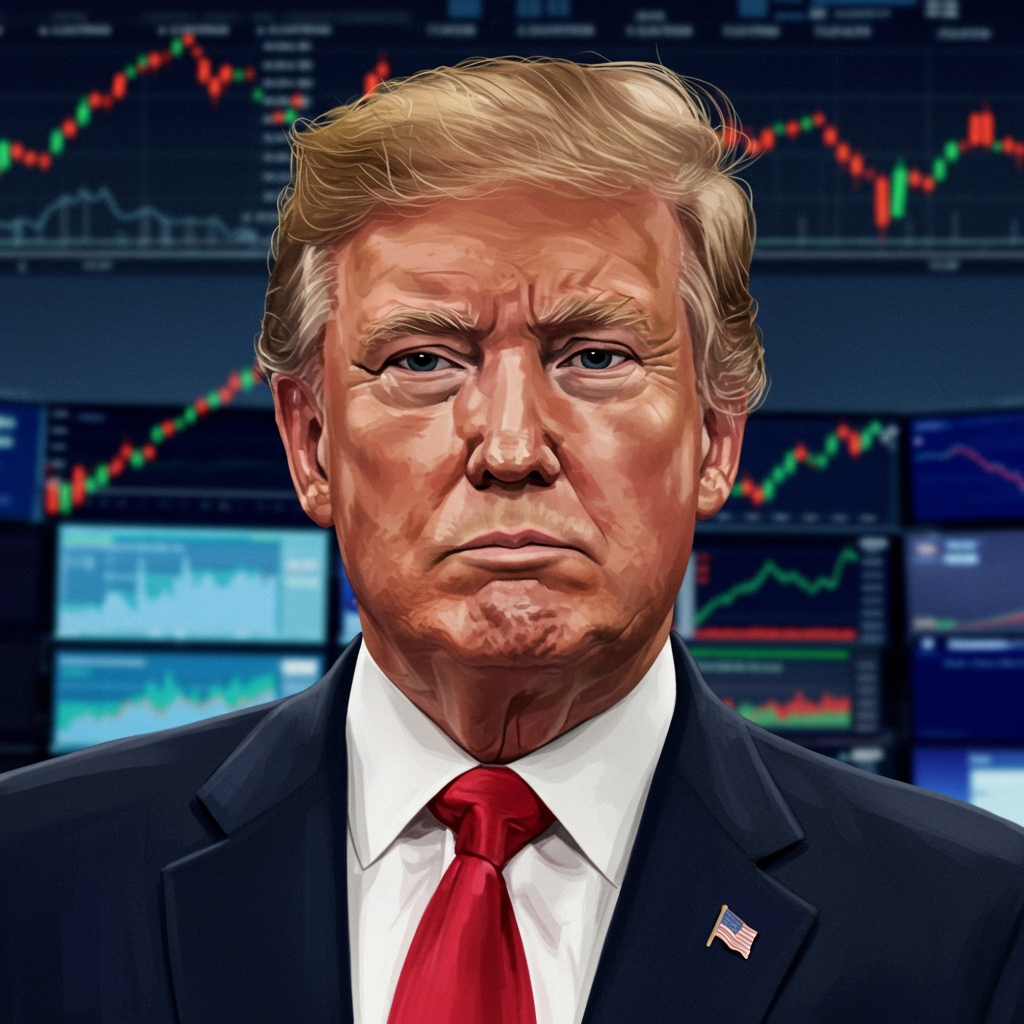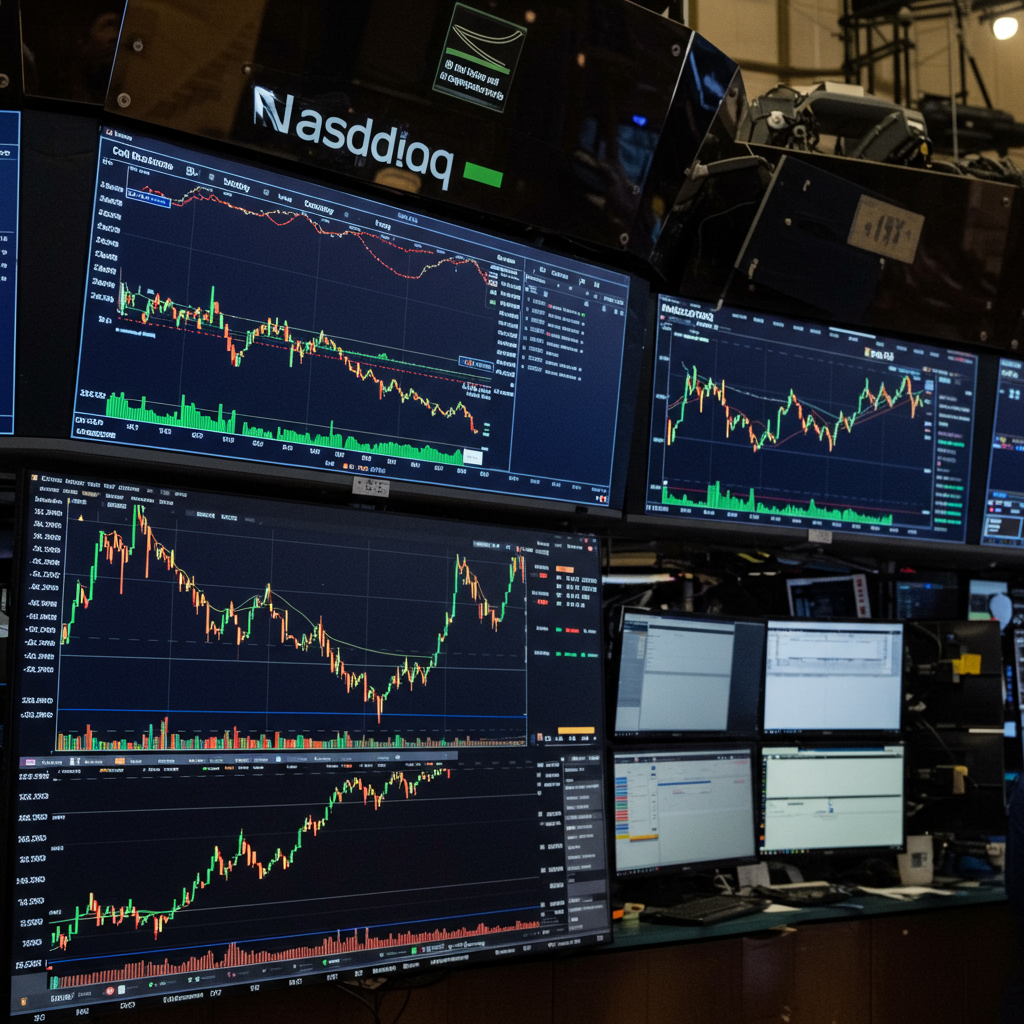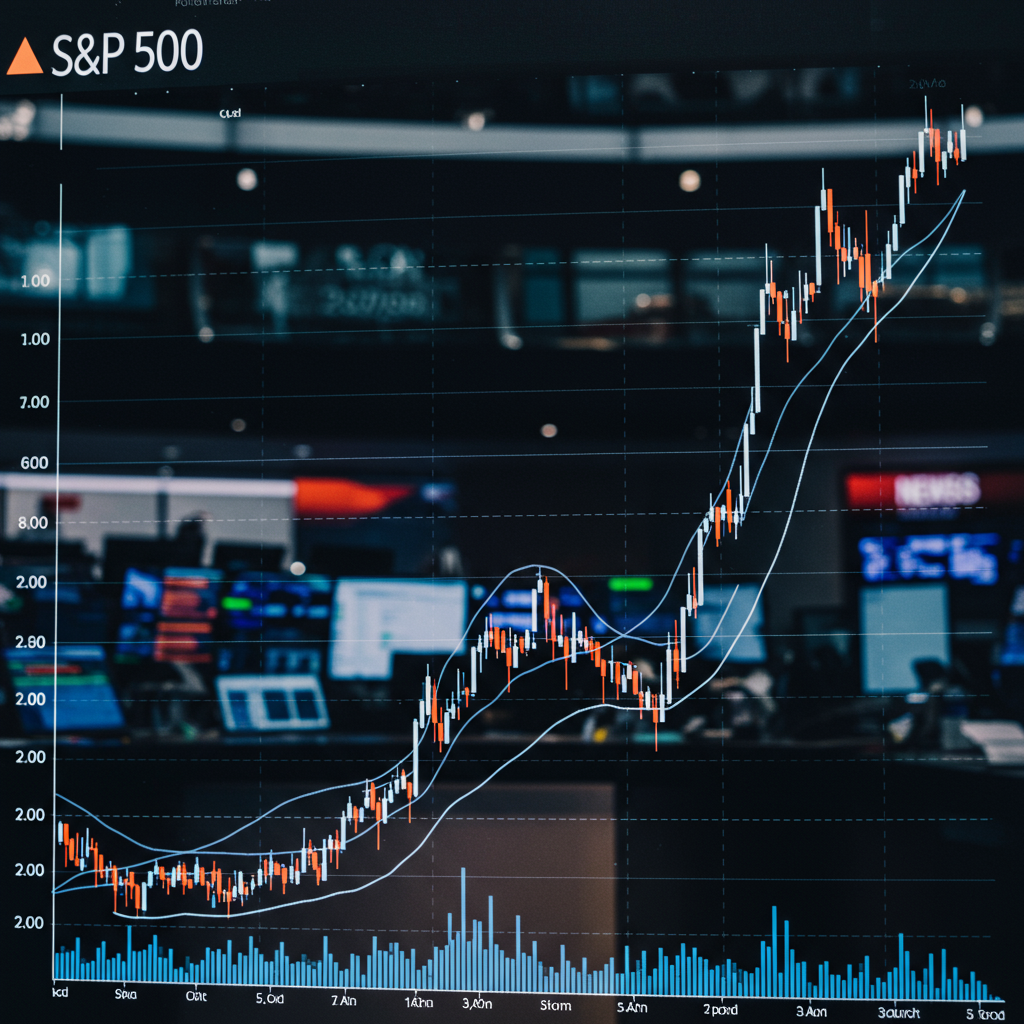Assumptions held sacred by Wall Street at the dawn of 2025 were decisively shattered. Global conflicts and the turbulent <a href="https://news.quantosei.com/2025/07/01/tuesday-briefing/" title="Essential Briefing: US Dollar Weakens, trade Wars, China Energy”>policy landscape shaped by President Donald Trump unexpectedly reshaped financial markets. Long-standing beliefs about the stability and dominance of US assets and the overall American economy faced a stern test. market darlings crumbled while unlikely winners emerged from the volatility.
The Unfolding Market Shocks
Mid-2025 saw significant upheaval across global financial markets. Sovereign bond markets experienced sharp, unpredictable swings. The Japanese yen rallied against expectations. Emerging markets, long overlooked, finally showed signs of a robust comeback. This period of intense volatility revealed deep underlying shifts driven by policy uncertainty.
The abrupt fluctuations in U.S. tariff policies, particularly the pause following earlier announcements, triggered what some analysts termed a “tariff tantrum.” Markets reacted with synchronized, dramatic moves. Global stocks briefly flirted with bear market territory. The S&P 500 index saw daily swings of 6% or more for several consecutive days. U.S. Treasury bonds experienced one of their worst weekly declines in over two decades, with 10-year yields spiking sharply. Simultaneously, the U.S. dollar recorded one of its most significant weekly drops since the 2008 financial crisis, while gold climbed to new record highs.
Questioning Confidence in US Assets
This market chaos wasn’t random; it signaled a fundamental questioning of global confidence in U.S. assets. Considerable uncertainty persisted regarding the long-term goals of the administration’s policies. Concerns mounted over their potential economic fallout on deficits, business investment, consumers, and specific sectors like cutting-edge technology. Despite some tariff relief, average U.S. tariff rates remained elevated, potentially hindering projected economic and corporate earnings growth. This uncertainty had a tangible effect on business decisions, with companies adjusting logistics and supply chains in anticipation of tariff impacts. Wall Street analysts consistently revised S&P 500 earnings forecasts downward, marking the longest streak in years.
Static economic models, often used for policy analysis, failed to predict these dynamics. These models might suggest tariffs would strengthen the dollar and reduce trade deficits. However, observed market reactions, such as capital outflows and a weakening dollar after tariff announcements, contradicted these predictions. More sophisticated dynamic models that account for flexible capital markets and trade in intermediate goods appear more consistent with real-world outcomes, showing that tariffs can increase the cost of domestic capital and deter investment.
Navigating the 2025 Policy Landscape
The policy environment in 2025 was characterized by high existing tariffs and a tactical shift in trade negotiation strategy. Rather than pursuing large, comprehensive trade deals globally, the administration focused on securing smaller, quicker “mini deals” with individual countries. This approach was largely driven by a self-imposed deadline in early July, after which tougher tariffs could be reimposed following an earlier pause. Countries entering these mini deals aimed to avoid the harshest potential duties, although some existing tariffs might remain in place during ongoing negotiations.
Negotiations were active with numerous key trading partners, including the European Union, Canada, Japan, India, South Korea, China, Mexico, and the United Kingdom (which had already finalized a deal reducing some levies). These talks addressed specific sector exemptions, quotas, and overall tariff rates. The looming deadline created pressure, though signals from the administration about its flexibility remained mixed.
Beyond trade, tax policy also played a significant role. Proposals included extending expiring provisions of the Tax Cuts and Jobs Act (TCJA) and potential additional tax cuts. While adding significantly to the federal deficit, the direct stimulative effect of simply extending existing policy was deemed limited. Tariff revenue was also projected to be substantial, but dynamic analysis suggested the broader economic costs of tariffs could outweigh these revenue gains, particularly by negatively impacting capital formation and demand for U.S. assets.
Economic Scenarios Under Policy Uncertainty
Given the fluid and uncertain policy environment, particularly concerning tariffs and taxes, economic forecasts for the U.S. economy in 2025 and beyond often relied on scenario-based analysis. One baseline forecast projected a period of modest economic growth, constrained by the combination of elevated tariffs and higher interest rates.
Baseline Economic Outlook
In a baseline scenario, assuming average tariff rates remained high (e.g., 15% overall, much higher on countries like China) and fiscal policy remained expansionary due to tax cuts, the economy was projected to face headwinds. Inflation was expected to accelerate in 2025 and 2026, partly due to the direct inflationary impulse from tariffs and rising inflation expectations among consumers. The Federal Reserve was anticipated to cut interest rates cautiously, restrained by persistent core inflation. Bond markets were expected to see the 10-year Treasury yield hover around 4.5% through late 2025 before gradually declining.
This scenario projected slower business investment and hiring due to higher costs and uncertainty. The unemployment rate was forecast to rise, potentially peaking in 2026. Trade volumes were expected to slow dramatically, with significant declines in imports and exports in 2026. Real GDP growth was forecast to be modest in 2025 and 2026 before potentially accelerating later. Consumer spending was also expected to be restrained by subdued wage growth relative to spending power, higher rates, and rising delinquencies.
Alternative Economic Paths
Alternative scenarios painted different pictures. An “Upside” scenario, driven by easing trade tensions and a more dovish monetary policy response to faster disinflation, projected stronger economic growth, lower interest rates, and increased business investment. Conversely, a “Downside” scenario, involving escalating trade wars and a sharp increase in tariffs, warned of a potential recession triggered by negative bond market reactions, forced government austerity measures, and a sharp rise in unemployment.
The Bond Market as a Policy Constraint
The bond market, specifically the market for U.S. Treasury bonds, emerged as a powerful potential check on presidential economic policies. As large deficits necessitate increased government borrowing (bond issuance), bond traders scrutinize the government’s fiscal health. A larger supply of bonds, coupled with concerns about the government’s ability to manage its debt or lack of political will for fiscal discipline, can lead investors to demand higher yields to purchase that debt.
Higher bond yields translate directly into higher borrowing costs across the entire economy, impacting everything from mortgage rates for homeowners to corporate debt for businesses. This can dampen economic activity, potentially working against an administration’s growth agenda. The concept of “bond vigilantes” – bond traders who punish perceived fiscal irresponsibility by demanding higher yields – gained prominence. The example of former UK Prime Minister Liz Truss, whose unfunded tax cuts led to a bond market panic and ultimately contributed to her resignation, served as a recent, stark illustration of this market power.
While the U.S. dollar’s status as the world’s primary reserve currency provides some buffer, analysts warned this status is not immutable and could be eroded by unsustainable fiscal paths. The contradiction between proposing large, unfunded tax cuts and aiming for deficit reduction highlighted this challenge. Recent episodes of large Treasury auctions failing to find sufficient buyers at expected yields also demonstrated that the market is sensitive to supply dynamics, especially in a context of persistent inflation. Policies like tariffs, while generating revenue, were seen by some dynamic models as potentially harming the bond market by reducing international demand for U.S. assets, complicating future debt financing.
Implications for Investors and Businesses
The volatile environment had direct consequences for investors and businesses. Early economic data showed prices of some imported goods starting to rise. Corporate profit margins faced pressure, forcing companies to either pass costs onto consumers or absorb them. Industries heavily reliant on imports, like fireworks, faced significant uncertainty depending on the duration of tariff pauses.
For investors, the market turbulence underscored the importance of global diversification. Foreign investors showed signs of selling U.S. equities at a record pace, while domestic investors continued buying. This divergence, alongside differing reactions in U.S. and international bond markets, challenged the narrative of U.S. market exceptionalism seen in prior years. Analysts recommended investors consider broadening their portfolios geographically and potentially hedging currency exposure as the dollar faced pressure. The volatility also reinforced the long-standing lesson against attempting to time market exits during downturns, as significant gains often occur close to significant losses. Staying committed to a long-term investment strategy aligned with personal goals remained the common advice.
The Path Forward Remains Uncertain
The economic path for the U.S. economy remains deeply uncertain, heavily contingent on the future trajectory of tariff and fiscal policies. While piecemeal policies like specific tariff adjustments or limited tax extensions have immediate effects, the scale of the national debt challenge suggests a more fundamental, comprehensive fiscal reform may ultimately be required. The dynamic interactions between trade policy, tax policy, national debt, and global capital markets will continue to shape the economic landscape, testing assumptions and challenging policymakers and investors alike.
Frequently Asked Questions
How did Trump’s policies specifically impact US bond yields and the dollar in 2025?
Trump’s tariff and tax policies created significant market volatility. Announced tariffs contributed to a “tariff tantrum,” where U.S. Treasury yields, particularly the 10-year yield, spiked sharply. Simultaneously, the U.S. dollar experienced one of its largest weekly drops in years. These movements were partly linked to dynamic models suggesting tariffs could reduce international demand for U.S. assets, impacting capital flows and complicating debt financing, contradicting predictions from simpler models. The market’s reaction also signaled questioning global confidence in U.S. fiscal stability, especially concerning growing national debt.
What are the potential economic outcomes forecast for the US economy based on different tariff policies?
Economic forecasts used scenario-based analysis due to policy uncertainty. A baseline scenario, assuming elevated average tariffs, projected modest GDP growth, rising unemployment, accelerating inflation (partly due to tariffs), and cautious interest rate cuts by the Federal Reserve. An “Upside” scenario with eased trade tensions predicted stronger growth and lower rates. A “Downside” scenario with escalating tariffs warned of a potential recession, severe bond market turmoil, and high unemployment, highlighting the significant economic risks tied to trade policy.
Why is global diversification important for investors given recent US market volatility?
Recent volatility in U.S. markets, linked to policy uncertainty and the “tariff tantrum,” has shaken global confidence in U.S. assets. Data showed foreign investors selling U.S. stocks at a record pace. The divergent reactions in U.S. and international bond markets also underscored that U.S. market performance might not always align with global trends. This environment highlighted the importance of diversifying investment portfolios geographically to potentially mitigate risks concentrated in a single market and capture opportunities abroad, particularly as the U.S. dollar faced pressure.




